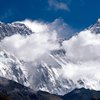Namibia has been called four countries in one, with its vast 318,259-square-mile area encompassing fearsomely dry desert, tropical swamp, canyons and 976 miles of coastline. This southwest African country is an interesting blend culturally, too, having been a German colony from 1884 to 1919, administered by apartheid-era South Africa until 1990, and featuring frequently more recently in survival and wilderness programs. Namibia has always attracted adventurous types; if visiting, bear in mind that the rainy season occurs from November to April, and January and February are the hottest months with temperatures peaking in the 100s. Long and thin in shape, Namibia hosts some fascinating landforms.
Northern Namibia
The Bushveld is a flat, sandy area towards the northern border with Angola. The area includes Etosha National Park, one of the world’s greatest wildlife-viewing spots, according to Lonely Planet. The 7,722-square-mile expanse of flat salt pans is transformed during the rainy season into a shallow lagoon that attracts flocks of flamingos. Nearby grassland and watering holes attract larger wildlife such as lions and elephants. Also near Etosha is an adopted landform of sorts, the 60-ton Hoba meteorite, which fell to earth 80,000 years ago and remains the largest meteorite on the planet. The region’s Lake Otjikoto is one of Namibia’s two natural lakes. Actually a sinkhole, it was once thought to be bottomless, and was a dumping ground for German military munitions and equipment.
Desert
Namibia is an extremely arid country. Whereas the Namib Desert runs along the country’s so-called Skeleton Coast and is distinguished by its looming dunes in a variety of hues from maroon to apricot, the Kalahari Desert (the setting of the movie "The Gods Must Be Crazy") is an inland expanse shared with South Africa and Botswana. The Namib is one of the oldest deserts in the world, dating back 43 million years. Visit the dunes at Sossusvlei in the Namib-Naukluft National Park and the rock paintings at Brandberg. The Kalahari is home to the legendary San Bushmen, who survive on a parched terrain of low grassland, small red dunes and fossil watercourses that usually run dry.
River Canyon
The country’s longest river, the Fish River, runs 403 miles but dries up completely out of season. Nevertheless, the Fish River Canyon is the largest canyon in Africa, and the second largest in the world. The 17-mile-wide gorge runs for 99 miles, taking thousands of years to gouge a ravine through the interior desert plateau and. The canyon is within a national park and attracts many campers and hikers. Although the bottom of the canyon is dry throughout most of the year, it terminates in a hot springs around the resort at Ai-Ais, a five-day hike from the visitor center at Hobas. Day hikes into the canyon are prohibited, following a spate of lost hikers.
Wetlands
Completely unlike anywhere else in Namibia, the recently renamed Zambezi Region (formerly Caprivi) is a narrow but fertile strip of lush forests, swamps and some 200 species of flora prowled by buffalo and elephants. Nowhere else in this desert country can visitors undertake whitewater rafting. The Zambezi Region is in the far northeast of the country bordering the Zambezi and Zambia. The area supports numerous lodge hotels and safari centers and was formerly the chosen region for the South African Army.
Central Plateau
Namibia’s Central Plateau runs the length of the country, from north to south, and nurtures most of the habitations, including the capital Windhoek, over 5,000 feet above sea level, where the German language is still spoken. Bordered on either side by the great deserts, the inland plateau is a barren expanse of scrub grass and acacia, and numerous game parks. The plateau reaches areas of elevation with spectacular views, including the Khomas Hochland and the flat table-topped Gamsberg.
References
Resources
Photo Credits
- Comstock Images/Comstock/Getty Images




